Is the New Zealand Dollar Stronger Than the US Dollar? Understanding the Current Dynamics
As investors, we’re constantly evaluating relative strengths and weaknesses in the global financial landscape. One question you might be asking, especially if you’re looking at the Pacific or North American markets, is about the relationship between the New Zealand Dollar (NZD), often affectionately called the Kiwi, and the mighty US Dollar (USD), or the Greenback.
Let’s cut straight to the answer based on the current market conditions as of mid-2024: No, the US Dollar is currently significantly stronger than the New Zealand Dollar.
When we look at the NZD/USD exchange rate, we see a figure around 0.61. What does this number tell us? It means that one New Zealand Dollar is worth approximately 61 US cents. Conversely, if you look at the USD/NZD rate, it’s around 1.636, indicating that it takes roughly 1.636 New Zealand Dollars to buy just one US Dollar. This exchange rate clearly illustrates the US Dollar’s superior value at this moment in time.
Understanding this relative strength is crucial for anyone involved in forex trading, international business, or even just planning a trip abroad. But why is the US Dollar so much stronger than the Kiwi right now? The answer lies in a complex interplay of economic factors, monetary policy decisions, and global market sentiment.
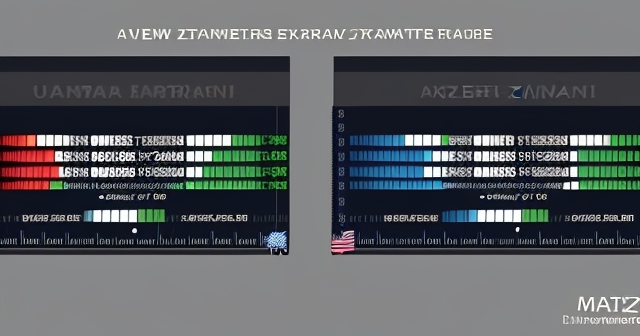
Below are some key points to consider regarding the strength of the USD compared to NZD:
- The US Dollar is the dominant reserve currency worldwide.
- The economic performance of the US continues to show resilience, in contrast to New Zealand’s recession.
- Higher interest rates in the US attract foreign investment, leading to increased demand for USD.
| Currency | Current Exchange Rate |
|---|---|
| NZD | 0.61 USD |
| USD | 1.636 NZD |
Deconstructing Relative Currency Strength: More Than Just a Number
Understanding which currency is “stronger” isn’t just about looking at a single number; it’s about understanding what that number represents and the forces behind it. An exchange rate is essentially the price of one currency in terms of another. It’s determined by supply and demand in the foreign exchange market.
When a currency is strong, it means there’s high demand for it relative to other currencies, or low supply. This demand can come from various sources:
- Foreign Investors: Attracted by higher interest rates or promising investment opportunities.
- Exporters: Who receive foreign currency and need to convert it back to their home currency.
- Tourists: Who need to buy local currency.
- Central Banks: Managing reserves or intervening in the market.
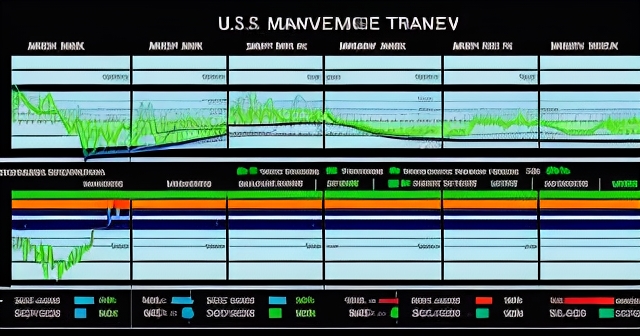
Conversely, a weaker currency faces lower demand or higher supply. Factors like lower interest rates, economic weakness, or political instability can decrease demand.
So, when we say the USD is stronger than the NZD, we mean that, in the current market, there’s a greater relative demand for US Dollars compared to New Zealand Dollars, driven by underlying economic and policy factors.
Think of it like a tug-of-war. On one side, factors are pulling the NZD’s value up, and on the other, factors are pulling it down. Similarly, the USD has its own set of forces. The exchange rate reflects which side is winning the tug-of-war between the two currencies at any given moment.
The Power of the Greenback: US Monetary Policy and Economic Undercurrents
A major driver of the US Dollar’s current strength is the stance of the Federal Reserve (the Fed), the central bank of the United States. Central banks play a pivotal role in currency values, primarily through their monetary policy decisions, most notably interest rates.
In its recent communications, the Federal Reserve has maintained a relatively cautious, or even hawkish, outlook on cutting interest rates. The latest projections suggest the Fed might only implement one interest rate cut in 2024, potentially waiting until late in the year, perhaps December. This view has been echoed by key figures like Minneapolis Fed President Neel Kashkari.
What does this mean for the US Dollar? When a central bank signals fewer or later interest rate cuts than previously expected, it generally makes that country’s assets (like bonds) more attractive to foreign investors seeking higher yields. This increased demand for US assets translates into increased demand for the US Dollar needed to buy those assets, thus boosting the USD’s value.
| Year | Expected Rate Cut by the Fed |
|---|---|
| 2024 | 1 rate cut expected |
| 2025 | No cuts expected until mid-2025 |
Moreover, a central bank comfortable keeping rates higher for longer often implies confidence (or concern about persistent inflation) regarding the underlying economy’s ability to withstand such rates. While there are always nuances, relatively solid economic data points in the US, even if mixed at times (like earlier softness in PPI potentially signaling easing inflation), support the Fed’s ability to hold rates steady. Higher investor confidence in the US economy can further bolster the Greenback.
So, the Fed’s current policy direction, signaling a slower pace of rate cuts than many might have hoped for previously, acts as a significant anchor supporting the US Dollar’s strength on the global stage.
Headwinds Facing the Kiwi: The Reality of the New Zealand Economy
While the US economy shows resilience, New Zealand’s domestic economic picture presents a stark contrast, contributing significantly to the Kiwi’s relative weakness. The New Zealand economy is currently in a recession. A recession is generally defined as two consecutive quarters of negative economic growth (GDP decline), and this status inherently weighs on a country’s currency.
Recent economic data out of New Zealand has reinforced concerns about the economy’s health. Notably, the services sector, a vital part of the New Zealand economy, experienced a sharp drop in May 2024. Data indicated its performance reached its lowest level since August 2021 (excluding specific COVID-19 lockdown periods) and was, in fact, the weakest since the survey tracking this sector began in 2007.
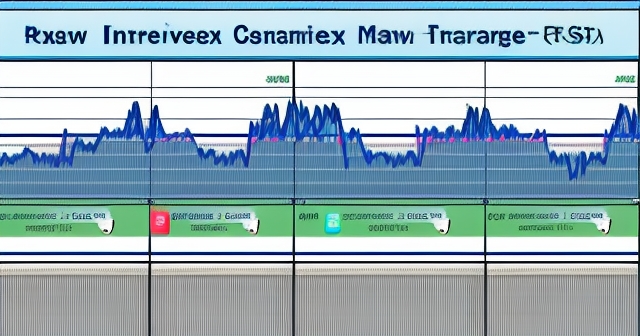
Weak economic data like this has a direct impact on currency value. It signals potential challenges for future growth, employment, and consumer spending. For a currency trader, weak data increases the likelihood that the country’s central bank will need to lower interest rates to stimulate economic activity.
This expectation of potential rate cuts from the Reserve Bank of New Zealand (RBNZ) in response to the struggling economy puts downward pressure on the NZD. Why? Because lower interest rates can make New Zealand less attractive for foreign investors seeking yield, potentially leading to capital outflows and decreased demand for the Kiwi.
The Reserve Bank of New Zealand’s Tightrope Walk: Policy vs. Market Expectations
Just like the Federal Reserve, the Reserve Bank of New Zealand (RBNZ) uses monetary policy, primarily the Official Cash Rate (OCR), to manage the economy and achieve its mandated goals. A key objective for the RBNZ is maintaining inflation within its target range of 1% to 3%, with a focus on keeping it near the 2% midpoint.
In the face of recessionary conditions and weak economic data, market participants have begun to price in the increasing probability of an RBNZ interest rate cut. As of mid-June 2024, markets were largely pricing in a full 25-basis-point rate cut from the RBNZ by November 2024.
However, this market expectation currently diverges from the RBNZ’s latest official communication. In its May 2024 Monetary Policy Statement, the RBNZ signaled that while inflation is moderating, it remains a concern, and rate cuts are unlikely until around mid-2025. This creates a policy uncertainty gap: the market is betting on cuts sooner than the RBNZ is publicly indicating.
This divergence adds another layer of complexity and volatility to the NZD. If upcoming economic data, such as the eagerly awaited first-quarter GDP figures (forecasted for a modest 0.2% year-on-year growth), comes in weaker than expected, it could solidify market expectations for earlier RBNZ cuts, potentially further weakening the NZD. Conversely, surprisingly strong data could challenge these expectations and lend some temporary support to the Kiwi.
The Crucial Role of Interest Rate Differentials
Perhaps one of the most fundamental drivers of currency exchange rates, particularly in the short to medium term, is the interest rate differential between two countries. This refers to the difference between the prevailing interest rates set by their respective central banks.
Why is this so important? Because international investors are always looking for the best return on their money. If one country offers significantly higher interest rates than another, it makes that country a more attractive place to invest in interest-bearing assets like government bonds or bank deposits. To invest in these assets, foreign investors need to buy that country’s currency, increasing its demand and value.
Applying this to the NZD/USD pair: When the Federal Reserve’s interest rates are relatively high compared to the Reserve Bank of New Zealand’s rates, or when the market expects US rates to remain high while anticipating cuts from the RBNZ, capital tends to flow out of New Zealand and into the United States (or at least slows down inflows into NZ). This outflow (or reduced inflow) of capital puts downward pressure on the NZD and upward pressure on the USD.

Currently, the narrative around interest rates supports USD strength. The Fed is signaling patience with rate cuts, while the RBNZ is dealing with a recession, increasing the likelihood of eventual cuts, even if the RBNZ’s official stance is for mid-2025. This divergence in expected monetary policy paths, creating a less favorable (or potentially worsening) interest rate differential for New Zealand, is a key reason the US Dollar is stronger.
Understanding this concept is vital. It’s like money is a magnet, and higher interest rates make the magnet stronger, attracting global capital. Right now, the US Dollar’s interest rate magnet is proving more powerful, or at least less likely to weaken soon, than the New Zealand Dollar’s.
External Influences: China, Commodities, and Global Sentiment
Beyond domestic economic conditions and monetary policy, the New Zealand Dollar, like many currencies, is significantly influenced by external factors. Given its geography and economic structure, key external drivers for the NZD include its relationship with China, global commodity prices, and overall market sentiment.
China’s economy is a crucial factor for the NZD. Why? Because China is New Zealand’s biggest trading partner. A healthy and growing Chinese economy means stronger demand for New Zealand’s exports. Positive economic data from China, such as surging trade surpluses (as seen in older data points provided), tends to be supportive of the NZD, as it implies better prospects for New Zealand’s export sector.
Commodity prices also play a significant role. New Zealand is a major exporter of agricultural products, particularly dairy. Dairy products are New Zealand’s main export. High dairy prices boost New Zealand’s export income and improve its terms of trade (the ratio of export prices to import prices), which is generally positive for the NZD. Because of this reliance on commodity exports, the NZD is often classified as a “commodity currency.” Other commodity currencies like the Australian Dollar (AUD) often move in tandem with the NZD, influenced by similar global commodity trends and their exposure to the Chinese economy.
As a commodity currency, the NZD is also sensitive to global market sentiment, particularly whether investors are in a “risk-on” or “risk-off” mood. In “risk-on” periods, characterized by optimism about global growth and stability, investors are more willing to invest in assets perceived as riskier, including commodity currencies and emerging markets. This increased appetite for risk tends to support the NZD. Conversely, in “risk-off” periods, triggered by geopolitical tensions (like the situation in Russia/Ukraine mentioned in older data context), economic uncertainty, or market turbulence, investors tend to flock to “safe haven” currencies like the US Dollar, Swiss Franc, or Japanese Yen. During these times, the NZD typically weakens against the USD.
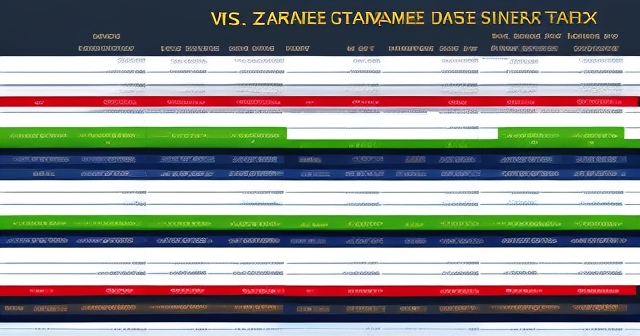
While domestic factors currently dominate the NZD/USD narrative, these external forces provide important context and can either amplify or partially offset the pressure on the Kiwi.
Historical Perspective: Peaks and Troughs of NZD/USD
Looking back at the history of the NZD/USD exchange rate can provide valuable context. Exchange rates are not static; they fluctuate significantly over time, reflecting the changing economic fortunes and policy decisions of the respective countries. Has the New Zealand Dollar ever been stronger than the US Dollar?
Yes, at certain points in history, the relative strength dynamic has been quite different. For instance, based on the provided data, the NZD reached an all-time high against the USD in October 1973. While the phrasing in the data point might be slightly ambiguous (often exchange rate highs refer to the *number* being high, which means the base currency is strong *relative* to the quote currency), historical charts confirm that around 1973, the rate was such that 1 New Zealand Dollar was worth *more* than 1 US Dollar. For example, one historical chart shows the USD/NZD (how many NZD per 1 USD) reached lows around 0.67 in 1973, meaning 1 USD bought only 0.67 NZD, or equivalently, 1 NZD bought 1 / 0.67 ≈ 1.49 USD. So, in late 1973, the NZD was indeed stronger than the USD.
Compare that historical peak to today’s rate of approximately 0.61 USD per NZD (meaning 1 NZD buys only 61 US cents, or 1 USD buys about 1.636 NZD). This dramatic shift illustrates just how much the relative economic and financial landscapes of New Zealand and the United States have changed over the decades.
Understanding this historical perspective reminds us that current strength or weakness is a snapshot in time. Exchange rates are constantly evolving, driven by the continuous flow of new economic data, central bank pronouncements, and geopolitical events. For traders and investors, recognizing that the market is dynamic is key to informed decision-making.
Navigating the NZD/USD Pair: Implications for Traders
For you, whether you’re a new investor or a seasoned trader focusing on technical analysis, understanding the fundamental forces driving the NZD/USD pair is essential. While technical analysis involves studying price charts, patterns, and indicators, these technical signals are often direct consequences of the fundamental dynamics we’ve discussed.
Think about it: weak economic data from New Zealand or a hawkish statement from the Federal Reserve doesn’t just appear out of nowhere; these events inject volatility into the market and can initiate or accelerate trends. Technical analysts then identify these trends, support and resistance levels, and potential entry/exit points using their tools. But the strength and direction of those trends are rooted in the underlying fundamentals.
Therefore, staying informed about key economic releases (like GDP, inflation, services sector data from NZ, and Fed statements, PPI from the US) and central bank meetings is crucial. These events are often catalysts for significant price movements in the NZD/USD pair. By understanding *why* the pair is moving, you can better interpret the technical signals and make more confident trading decisions.
For example, if the market is expecting weak NZ GDP data, a trader might look for technical signals confirming a potential downward move in NZD/USD. Conversely, a surprise positive release could lead to a sharp upward move, potentially invalidating previous technical bearish signals.
Furthermore, understanding the interest rate differential allows traders to consider strategies like carry trades (borrowing in a low-interest-rate currency to invest in a high-interest-rate currency), although these involve their own risks. More broadly, it helps explain persistent trends driven by yield-seeking behavior.
If you’re just starting your journey in foreign exchange trading or exploring opportunities in different financial instruments, having access to a robust and reliable trading platform is paramount. The right platform can provide the tools and data you need to analyze currency pairs like NZD/USD effectively.
If you’re considering beginning your journey into foreign exchange trading or exploring a variety of CFD instruments, then Moneta Markets is a platform worth considering. Hailing from Australia, it provides access to over 1000 financial instruments, catering to both novice and experienced traders alike.
Forecasts and Future Outlook for NZD/USD
What do market analysts predict for the future trajectory of the NZD/USD pair? While forecasts are never guaranteed and are subject to constant revision based on new information, they offer insights into current market expectations.
According to forecasts referenced in our data, the NZD/USD pair is expected to trade around 0.61 by the end of the current quarter. Looking further out, the forecast suggests a slight decline to 0.60 in 12 months.
What do these forecasts imply? They suggest that the current dynamic – the US Dollar being stronger than the New Zealand Dollar – is expected to persist in the near to medium term. The anticipated slight weakening of the NZD against the USD reflects the continued influence of the factors we’ve discussed, particularly the divergence in monetary policy expectations and the challenging economic conditions in New Zealand compared to the US.
However, it’s crucial to remember that these are just forecasts. Unforeseen events (sometimes called “black swans”), significant shifts in central bank policy, unexpected changes in economic data, or sudden swings in global risk sentiment can all cause exchange rates to deviate significantly from predictions. Therefore, while forecasts are useful for context, informed decision-making requires continuous monitoring of market developments.
Staying on top of these dynamics requires access to reliable market data and a platform that allows you to react efficiently to new information. Choosing a trading platform that offers comprehensive tools and data feeds can be a significant advantage.
When selecting a trading platform, the flexibility and technological advantages offered by Moneta Markets are worth highlighting. It supports popular platforms like MT4, MT5, and Pro Trader, combining high-speed execution with competitive low spread settings, providing a potentially beneficial trading experience.
Choosing Your Path: Trading Currencies and Other Instruments
Understanding the relative strength of currencies like the NZD and USD is not just an academic exercise; it’s practical knowledge for anyone involved in or considering involvement in the financial markets. The foreign exchange market is the largest and most liquid financial market in the world, offering numerous opportunities.
For aspiring traders and investors, the insights gained from analyzing currency pairs can be applied not only to direct forex trading but also to understanding the global economic backdrop that influences other asset classes like stocks, commodities, and indices.
Whether you are interested in capitalizing on currency movements, diversifying your portfolio, or using forex for hedging purposes, having a foundational understanding of what drives exchange rates is the first step. The next step involves selecting the right tools and partners to execute your trading strategy.
Finding a brokerage that provides both strong regulatory protection and the ability to trade globally is key for peace of mind and access to opportunities. If you’re looking for a regulated broker capable of facilitating global trading, Moneta Markets holds multi-jurisdictional regulatory licenses, including from the FSCA, ASIC, and FSA. They also offer features like segregated client funds, free VPS, and 24/7 multilingual customer support, making them a popular choice among many traders.
Conclusion: Where Does the Kiwi Stand Today?
In wrapping up our exploration, the answer to whether the New Zealand Dollar is stronger than the US Dollar is clear: No, the US Dollar currently holds a significant advantage in terms of relative strength.
This dynamic is not accidental; it is the result of powerful economic forces and policy decisions. The Federal Reserve’s cautious stance on interest rate cuts supports the US Dollar, making it attractive to global capital. Simultaneously, the New Zealand economy’s recessionary status and the associated expectations for eventual RBNZ rate cuts weigh heavily on the Kiwi. The resulting interest rate differential further reinforces this imbalance.
While external factors such as China’s economic performance, global commodity prices, and overall market sentiment play their part and can introduce volatility, the divergence in domestic economic health and monetary policy outlooks between the United States and New Zealand appears to be the primary driver maintaining the US Dollar’s dominance over the New Zealand Dollar in the current environment.
For you, as an investor or trader, this means recognizing the prevailing trend and understanding the fundamental reasons behind it. Whether you trade currencies directly or not, the NZD/USD pair serves as a useful barometer for global economic risk sentiment and the relative health of the US versus commodity-exporting economies like New Zealand.
Remember, the world of finance is ever-changing. The relative strength of currencies can shift as new data emerges and economic conditions evolve. Staying informed, continuously learning, and approaching the markets with a well-thought-out strategy are your best tools for navigating this dynamic landscape.
is the new zealand dollar stronger than the us dollarFAQ
Q:What is the current exchange rate between NZD and USD?
A:The current exchange rate is approximately 0.61 NZD per USD.
Q:Why is the US Dollar stronger than the New Zealand Dollar?
A:The US Dollar is stronger due to higher interest rates, stronger economic data, and increased foreign investment.
Q:How do interest rates affect currency strength?
A:Higher interest rates attract foreign investors, increasing demand for that currency and strengthening its value.
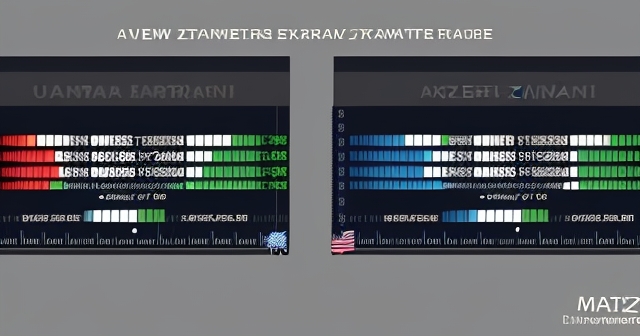
留言